As the weather begins to cool in the fall, the Florida Pompano begins to show up in the surf along the beaches along the Gulf of Mexico from Florida to Texas. Dedicated surf anglers gear up to target these tasty and hard-fighting members of the jack family. But, how to catch Pompano in the surf?
QUICK LOOK:
7 Tips for Catching Pompano in the Surf:
- Find the Right Spot: Look for areas with troughs or holes, as these are prime feeding areas for Pompano.
- Watch the Waves: Read the Beach – Pompano are often found in the troughs or holes between the breaking waves.
- Use the Right Bait: Sand fleas, shrimp and fishbites are three of the best baits to use when surf fishing for Pompano.
- Use a Two-Hook Rig: A two-hook rig is an effective way to increase your chances of catching Pompano. Use a small hook to thread the sand flea or shrimp through the tail and out the head, then attach the hook to the leader line.
- Position Your Baits: Cast your line beyond the breaking waves and into the troughs or holes where Pompano are feeding.
- Be Patient: Pompano can be elusive, so it’s important to be patient. Keep your line in the water and wait for the Pompano to bite.
- Be Prepared: When surf fishing for Pompano, it’s essential to be prepared. Bring plenty of water, sunscreen, and insect repellent. Wear polarized sunglasses to reduce glare and help you see the fish in the water. A hat and long-sleeved shirt can also help protect you from the sun. And, if you will be wading the surf, please wear a life jacket.
Warm water, and calm surf with green water to the beach, bring schools of pompano within casting distance of beach anglers. If you want to learn how to catch Pompano yourself, you’ve come to the right place!
Read on and, we’ll cover everything you need to know about finding and catching Pompano, including the best gear, lures, and baits to use, as well as tips for where and when to find Pompano along the beach.
The Florida Pompano
Pompano is a group of fish species in the taxonomic genus Trachinotus. Researchers recognize 21 different species in the group, and they are found in tropical and temperate regions throughout the globe. Pompano are often found in the surf zone along sandy beaches, in high-salinity estuaries, and in shallow coastal waters out to a depth of approximately 130 feet.
They feed on mollusks and crustaceans, especially sand fleas. Different species in this group utilize different specific habitats, and fish of different ages and sizes utilize different habitat types. The Florida Pompano is one of the most commonly targeted sport fish, and it is found in inshore and nearshore waters, especially along sandy beaches, along oyster banks, and over grass beds.

The Florida Pompano spawns offshore between March and September. The ideal water temperature for Pompano fishing is 70 – 80°F, as they are more active in this temperature range. The best time to catch Pompano in Florida is from April through September when the water is warmer and schools of Pompano move into the shallows around piers and the surf. In Texas prime time for Pompano is the Fall from September through December.

The average size of Florida Pompano caught in the surf is 12 to 16 inches and 1 to 3 pounds. However, the average size can vary depending on where you fish for Pompano. In some hot spots, the average size might be as big as 3 to 5 pounds, while less productive areas might have an average size of just 1 or 2 pounds. The maximum size of Florida Pompano is approximately 24 to 26 inches and 8 to 9lb.
Florida Pompano can be caught in the surf along the Gulf Beaches of Texas as well as other areas in coastal bays, estuaries, and even natural and artificial offshore reefs. Pompano prefer mid to higher salinities as evidenced by high catch rates from West Matagorda Bay to the lower Laguna Madre.
Pompano can be found in the Gulf of Mexico, and the Caribbean, particularly in the waters surrounding the Bahamas, Cuba, and the Dominican Republic. They are also found in parts of South America, such as Brazil and Venezuela.
Essential Gear for Pompano Fishing
Pompano is a popular game fish that is highly valued for its firm, white meat, and sweet flavor. They are found in the surf zone along sandy beaches and are known for their speed and agility. Before we dive into the details of how to catch Pompano, let’s take a look at some essential gear you’ll need.
To catch Pompano, you’ll need a few critical pieces of equipment. First, you’ll need a surf fishing rod, which is longer and more flexible than conventional fishing rods, allowing you to cast your bait farther out into the surf. A good surf fishing rod should be at least 8-10 feet long and have fast action.
You’ll also need a spinning reel that is designed for saltwater fishing. Look for a high-line capacity reel and smooth drag system. The drag system is vital when fishing for Pompano, as these fish are known for their solid and fast runs. In addition to the rod and reel, you’ll need a few other pieces of gear.
A fishing line with a test strength of 8-12 pounds is ideal for Pompano fishing in the surf. You’ll also need a few weights, or sinkers, to help your bait sink to the bottom where the Pompanos are feeding. Egg sinkers or pyramid sinkers are commonly used for surf fishing.
Pompano rigs: These are two hook leaders made of monofiliment line specifically designed for Pompano and come with smaller J hooks and often colored floats. The floats keep your bait up off the bottom and attract the fish to your bait.
Essential Surf Fishing Gear:
- Surf Fishing Rods, surf rods are typically longer and heavier duty than standard rods. – read more.
- Surf fishing Reels,larger and stronger with greater line capacity to handle big fish. – read more.
- Surf fishing Rod and Reel Combos, pre-matched rod and reel set ups for surf fishing – read more.
- Sand Spike Rod holder, holds your rods securely while you wait for that big bite. – read more.
- Surf Fishing Rigs, terminal tackle for fishing the surf. – read more.
- Surf fishing Carts, for beaches that won’t allow vehicles you need a way to carry your gear – read more.
- Rod Racks for Vehicles, carry your rods out of harms way and easy to access- read more.
- Beach Camping Gear, in case you want to fish all night or for several days – read more.
The Best Lures and Baits for Pompano
One of the keys to successful Pompano fishing is using the right bait. Catching Pompano can be challenging, and the type of bait used can make all the difference. Here are some of the best lures and baits to use when fishing for Pompano:
Sand Fleas: Sand fleas, or mole crabs, are the preferred bait for Pompano fishing in Florida. These tiny crustaceans are abundant in the sand along the beaches and easily caught using a sand flea rake. Alternatively, they can be purchased from a local bait shop. The best way to rig sand fleas for Pompano fishing is to use a two-hook rig.
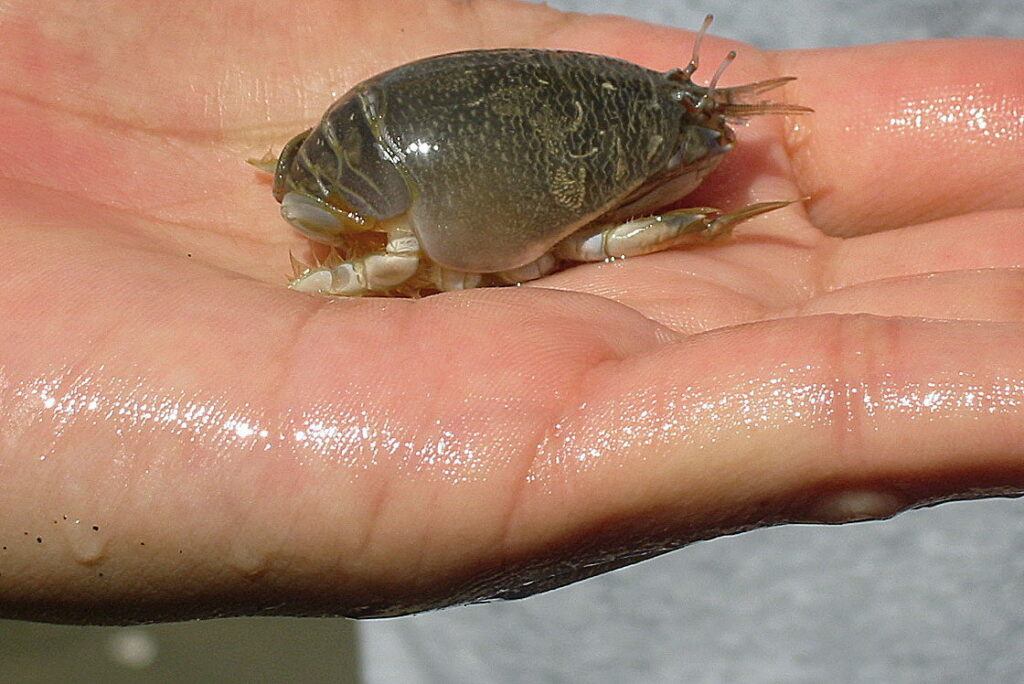
Use a small hook to thread the sand flea through the tail and out the head, then attach the hook to the leader line. Sand fleas are known for their strong scent, which attracts Pompano, and they are also durable, making them an excellent choice for surf fishing.
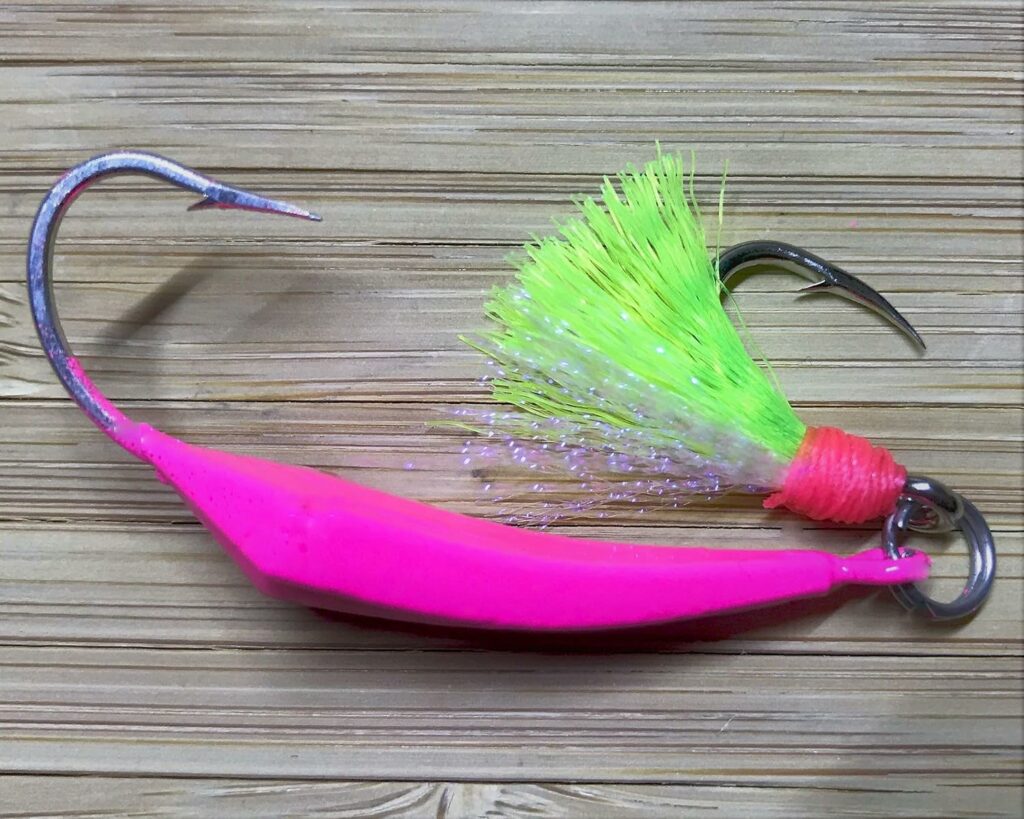
Shrimp: Fresh or frozen shrimp is another popular bait for Pompano fishing. Fresh shrimp, with the head and shell still intact, is preferred, as it has a more pungent scent and attracts more fish. When using frozen shrimp, make sure it is thawed and not freezer-burned. To rig shrimp for Pompano fishing, use a two-hook rig with a small piece of shrimp on one hook and the other left bare. The shrimp should be threaded through the tail and out the head, then attached to the hook.
Jigs: Jigs are another effective lure for Pompano fishing. Banana jigs in pink or orange colors are popular choices. The best way to use a jig is to bounce it off the sand on the beach. This technique mimics the movement of sand fleas and can be very effective in attracting Pompano.
Fishbites and FishGum: These are synthetic strip baits with added scents and feeding stimulants that come in a variety of fish-catching flavors. Shrimp, Sand Flea, and Clam scented are the favorites for catching Pompano.
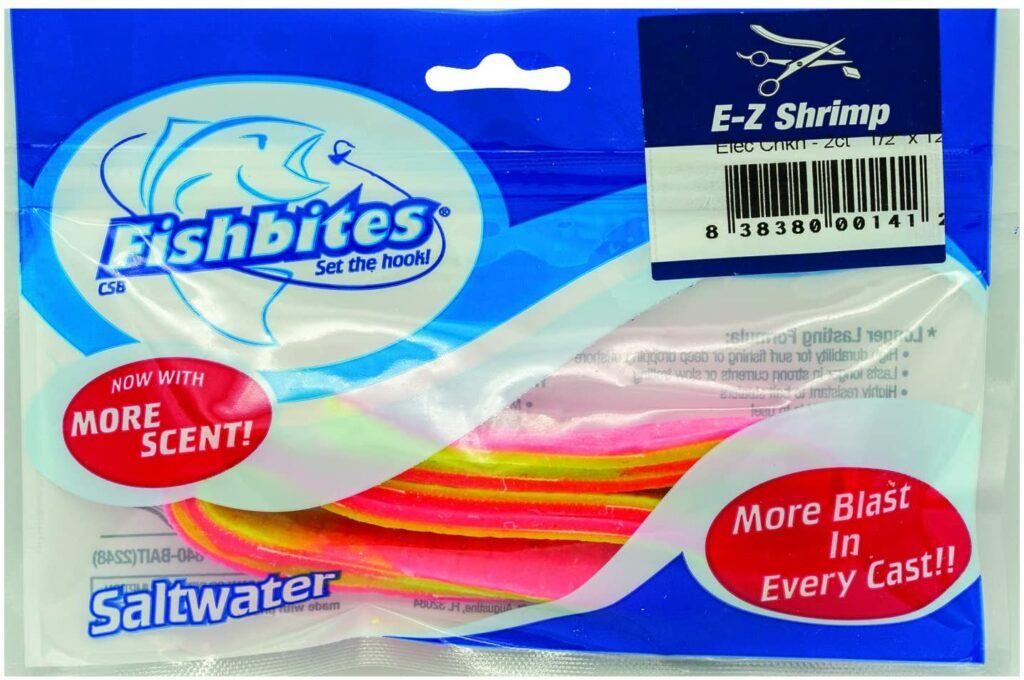
Mastering the Art of Surf Fishing for Pompano
Surf fishing for Pompano can be challenging, but with the right techniques, you can increase your chances of success. Catching Pompano in the surf requires a bit of strategy. Here are some tips for mastering the art of surf fishing for Pompano:
Fishing Strategies: How to Catch Pompano in the Surf
- Find the Right Spot: Pompano are found in the surf zone along sandy beaches. Look for areas with troughs or holes, as these are prime feeding areas for Pompano.
- Watch the Waves: Pompano are often found in the troughs or holes between the breaking waves. Watch the waves and cast your line into these areas.
- Use the Right Bait: As we mentioned earlier, using the right bait is essential for catching Pompano. Sand fleas and shrimp are two of the best baits to use when surf fishing for Pompano.
- Use a Two-Hook Rig: A two-hook rig is an effective way to increase your chances of catching Pompano. Use a small hook to thread the sand flea or shrimp through the tail and out the head, then attach the hook to the leader line.
- Position Your Baits: Cast your line beyond the breaking waves and into the troughs or holes where Pompano are feeding. Use a two-hook rig with sand fleas or shrimp as bait.
- Be Patient: Pompano can be elusive, so it’s important to be patient. Keep your line in the water and wait for the Pompano to bite.
- Be Prepared: When surf fishing for Pompano, it’s essential to be prepared. Bring plenty of water, sunscreen, and insect repellent. Wear polarized sunglasses to reduce glare and help you see the fish in the water. A hat and long-sleeved shirt can also help protect you from the sun. And, if you will be wading the surf, please wear a life jacket.
Best Time of Year for Beach Fishing for Pompano
Pompano are more active in warmer waters, but not hot, with the ideal water temperature for Pompano fishing being 70 – 80°F. The Pompano fishing season in Florida starts in March when the water heats up and finishes in October when the waters cool down.
The best months to catch Pompano in Florida are from April through September when the water is warmer and schools of Pompano move into the shallows around piers and the surf. The ideal Pompano fishing conditions are created in places where the waters are clear and where there is little to no wind with calmer surf conditions.
The worst months for Pompano fishing in Florida are January – February, and November – December. Pompano are more active in bright sunlight conditions. That’s why targeting Pompano in the middle of the day and on clear sunny days rather than overcast conditions is best.
Along the Texas Gulf Coast, Pompano fishing picks up in the fall months of October through December and then again in the spring from March through May. In the hot summer months of July through September, the water temperature gets too warm and in January and February, water temperature is typically too cold for Pompano.
Best Beaches for Catching Pompano in the Surf
Surf fishing is the most popular and often productive place to catch pompano. Some of the top beaches in Florida to catch pompano include Playa Linda, the beaches north of Sebastian Inlet, the beaches along the central part of South Hutchinson Island, Hobe Sound, and Juno Beach. Beachfront piers also provide great access to the surf for those who want to catch Pompano and stay dry at the same time ;).
Along the Texas Gulf Coast, the best beaches for catching Pompano are Padre Island National Seashore, South Padre Island, Matagorda Beach, and Surfside Beach. Pompano prefer mid to higher salinities as evidenced by high catch rates from West Matagorda Bay to the lower Laguna Madre. The majority of Pompano caught in Texas are caught along the beaches of Padre Island.
Frequently Asked Questions on How to Catch Pompano

What is the best way to catch Pompano?
Surf fishing is the most popular and often productive place to catch pompano. Fan casting and covering different depths is effective. If fishing with lures, experiment with different retrieval speeds and pay attention to what works best on a given day.
What other areas, outside of Florida, can you catch pompano?
Pompano can be found in the Caribbean, particularly in the waters surrounding the Bahamas, Cuba, and the Dominican Republic. Along the Gulf of Mexico Coast of Texas and they are also found in parts of South America, such as Brazil and Venezuela.
What is the best bait for catching pompano?
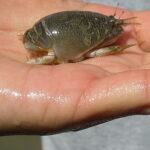
Crabs, clams, live shrimp, sand fleas, and all the other crustaceans that stay active after the cast are suitable candidates for this. Sand fleas and shrimp fished with a pompano rig are great baits when fishing for Pompano. The best lures for pompano are pink or orange banana jigs or white and pink pompano feather jigs fished off of the beach or around inshore sand bars.
Are there regulations on fishing for Pompano?
The regulations vary depending on the location. In Texas state waters, there are currently no regulations pertaining to pompano. However, in Florida, the Florida Fish and Wildlife Conservation Commission has set a minimum size limit of 11 inches fork length and a daily bag limit of 6 per angler for Florida pompano and African pompano. If you are planning to fish for Pompano, it’s important to be aware of the local regulations to avoid any legal issues.
What is the average size of Pompano caught in the surf?
Pompano commonly range from 1 to 3 pounds, but larger specimens can be caught. The average size can vary depending on the location and time of year.
What is the best time to catch Pompano in the surf?
Pompano are often more active during the early morning and late afternoon. Tides also play a crucial role, with the incoming tide generally being more productive.
What type of rig should I use for surf fishing Pompano?

The Pompano rig, which typically consists of two or three dropper loops with small hooks, is popular. Use a pyramid sinker, or spider weight, to keep the bait on the sandy bottom.
What is the recommended rod and reel setup for Pompano fishing?
A light to medium spinning rod in the 7 to 10-foot range paired with a reel with a smooth drag system is ideal. Spooling with 10 to 15-pound test monofilament or fluorocarbon line is common.
Are there specific locations that are better for Pompano fishing?
Pompano often frequent areas with sandy bottoms, troughs, and sandbars. Jetties, piers, and inlets are also good locations to target Pompano.
How do I identify Pompano bites?
Pompano bites can be subtle, often starting with a series of taps or light pulls. Keep a close eye on your rod tip, and when you feel a bite, give a quick hookset.
How to Clean and Cook Pompano
There are many ways to prepare pompano. Rated by some as one of the best-tasting fish in the sea, Pompano lends itself to a variety of cooking methods. Here are some recipes that you might find helpful when you catch a few for yourself:
Baked Pompano Fish in the Oven: This recipe involves stuffing the fish with onions, peppers, lemon, butter, and cilantro, wrapping it in foil, and baking it for 20 minutes. The fish is then uncovered and baked for another 10 minutes before broiling it for a crispy finish.
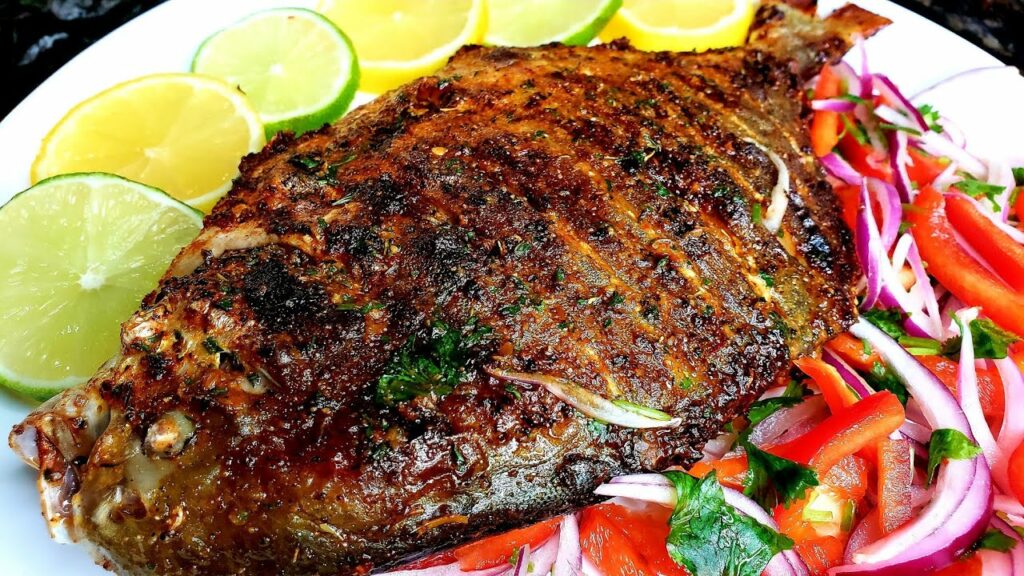
Grilled Pompano Fish: This recipe involves making a marinade of peppercorn, coriander seeds, sesame oil, chili paste, and other spices, rubbing it all over the fish, and letting it rest for an hour. The fish is then broiled in the oven for 8 to 10 minutes on each side, brushing some marinade on it before flipping. Here is a detailed recipe video on YouTube.
Whole Roasted Pompano: This recipe involves placing the fish on a sheet pan over a few sprigs of fresh dill, stuffing the inside loosely with lemon slices and remaining dill, and roasting it for 18–20 minutes, or until done. You can find the recipe on Garden & Gun’s website.
Whole Baked Pompano with Lemon Ginger Sauce: This recipe involves cleaning and rinsing the fish, preparing a sauce of ginger, garlic, cilantro, soy sauce, and cooking wine, and baking the fish in a baking dish with the sauce for 15-20 minutes. You can find the recipe on The Top Meal’s website.
Start Increasing Your Pompano Fishing Success
Catching Pompano can be challenging, but with the right gear, lures, and baits, as well as the right techniques, you can increase your chances of success. Remember to be patient and persistent, and don’t be afraid to try new things. With these tips, you’ll be well on your way to catching Pompano like a pro!
As always, stay safe, enjoy the journey and please try to leave it cleaner than you found it. If you have any comments, questions, ideas, or suggestions please leave them in the comment section below and I’ll get back to you ASAP. You can follow us on Facebook: Rex The Beach Angler, Instagram: thebeachangler7, Twitter: @AnglerBeach, and YouTube: Man Art Creations.
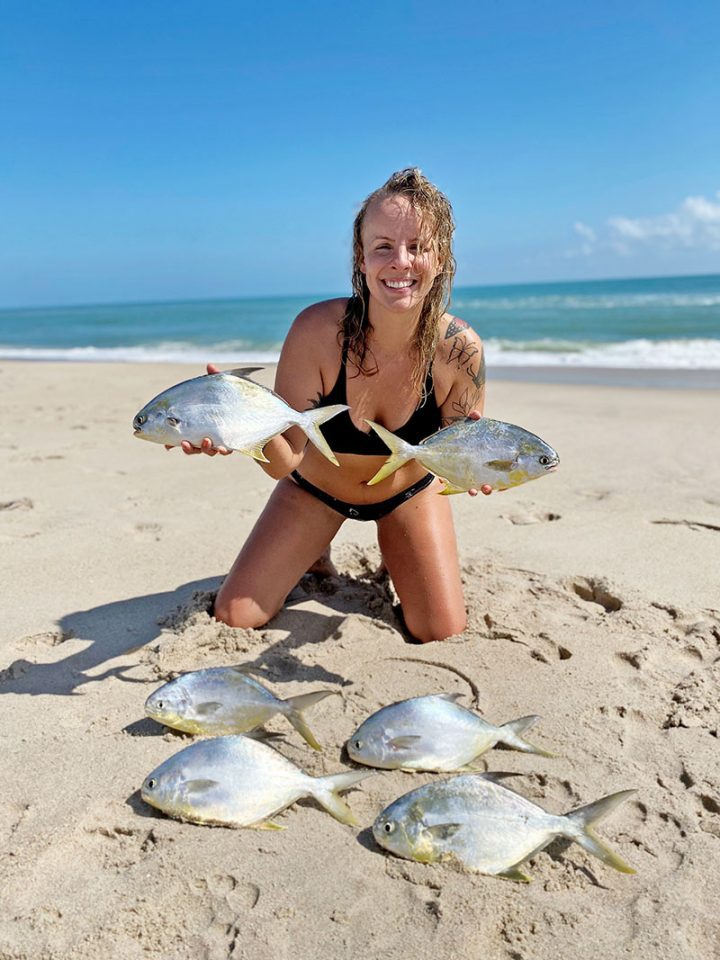
P.S. – Thanks so much for checking out our blog we really appreciate it. Just so you know, we may receive a commission if you click on some of the links that appear on our site. This helps us keep our content free and up-to-date for everyone. We appreciate your support!
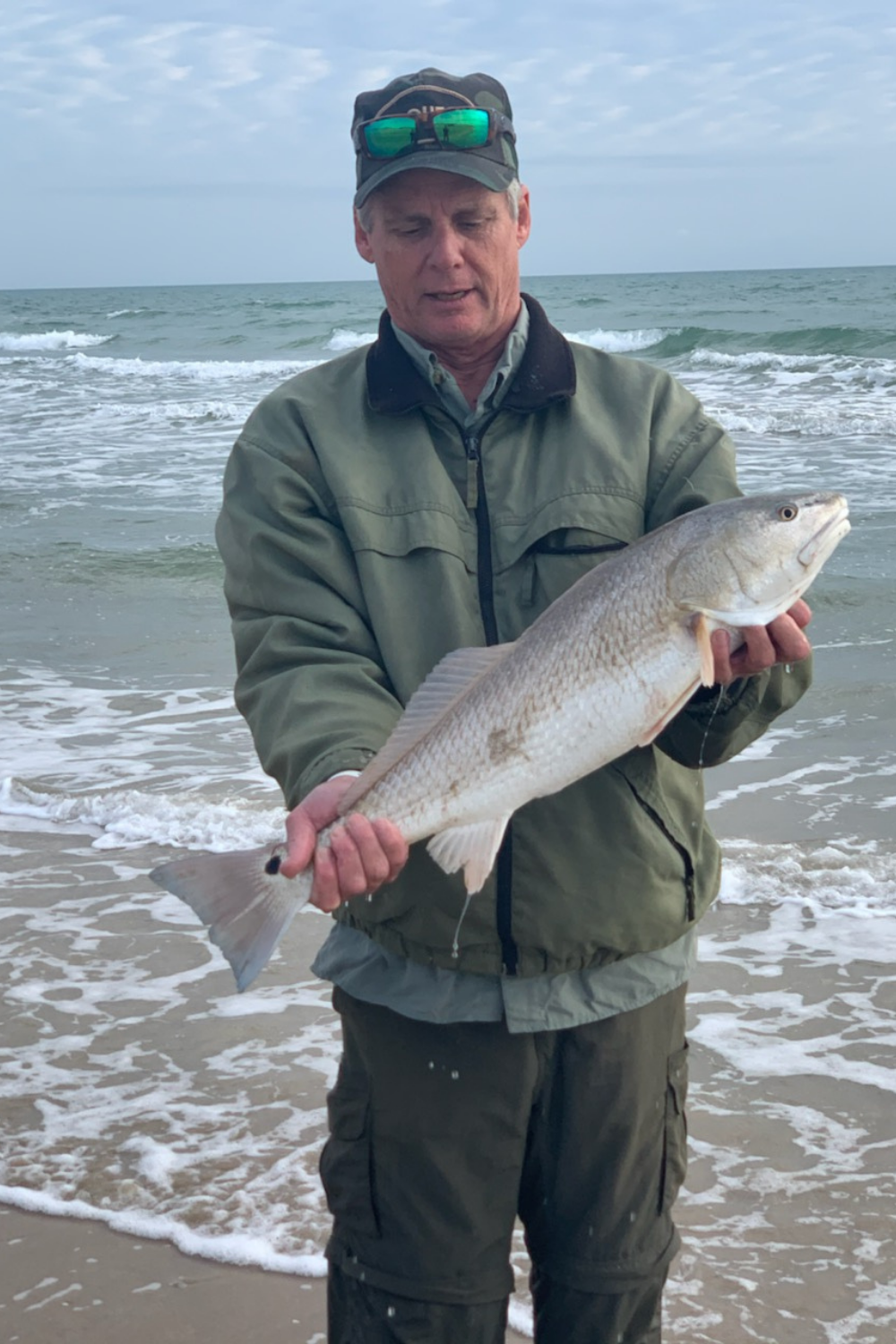
A life long surf fisherman with 50+ years of experience, I am also an avid hunter and outdoorsman. I will be sharing my passion for the outdoors with you so be prepared for hunting, fishing, camping, hiking and more. Along with gear reviews and the latest trends and innovations in the outdoor industry.
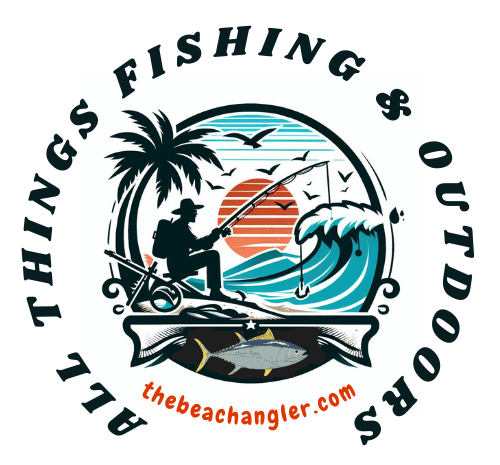
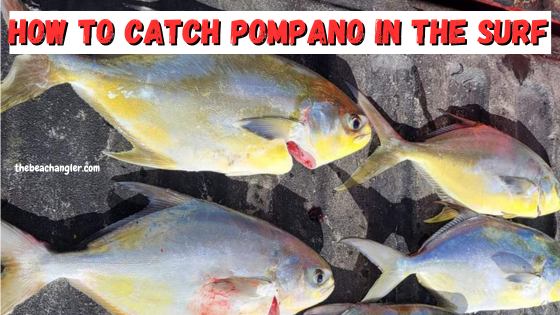
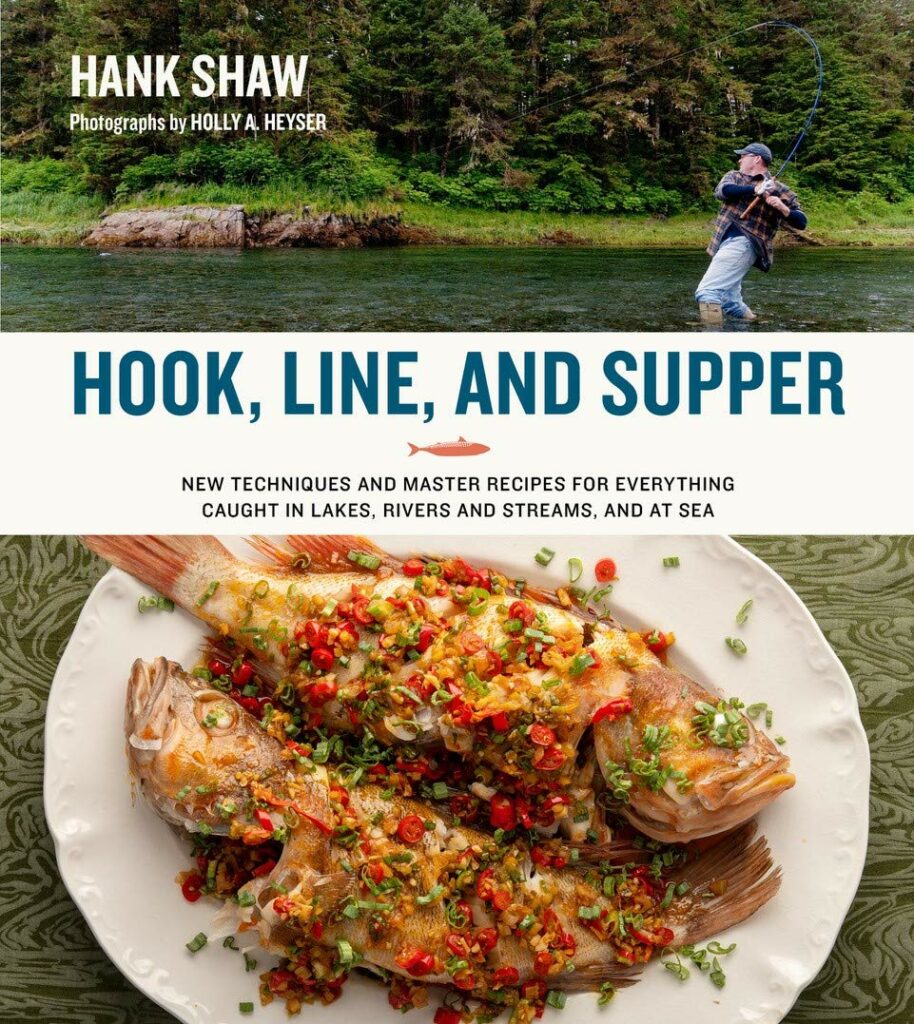

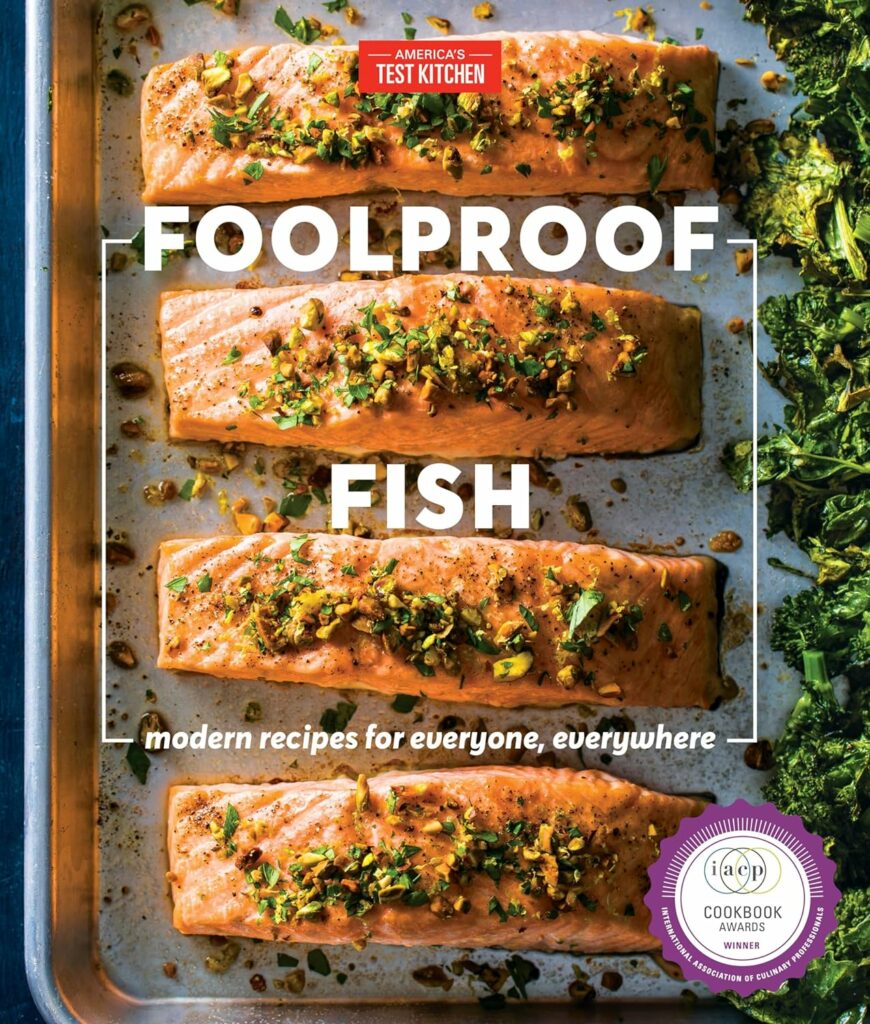

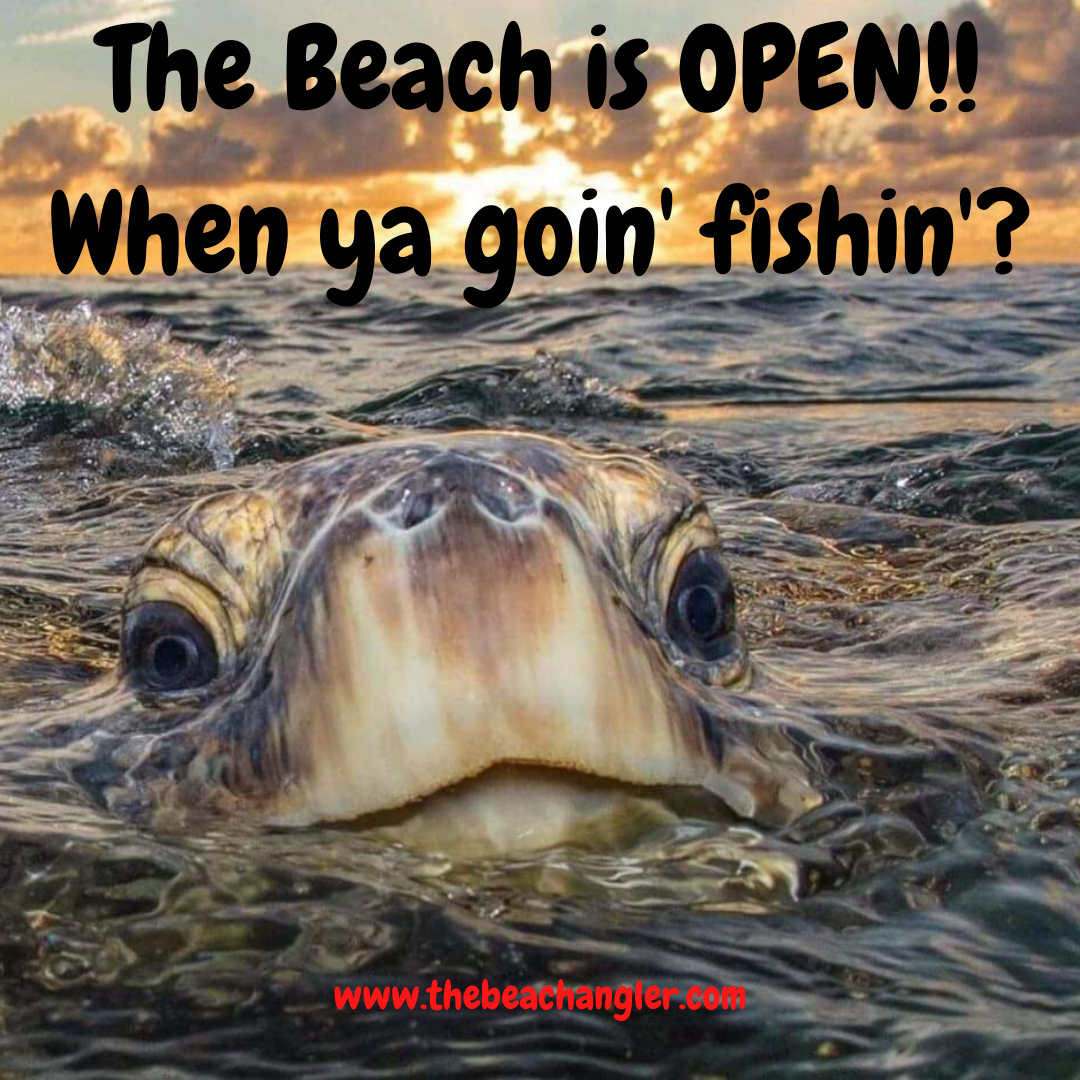
Very informative read, thank you. Any advice for fishing around St Augustine in March?
You’re very welcome Joe. Thanks for your comment. March is a great time to surf fish around St Augustine. The water should be warming into the 70s and the fish will moving into the surf zone. There are plenty of beaches to fish, it will depend on what kind of access you prefer. Vilano Beach is a favorite spot, and it is easy to access, but it will be more crowded as a result. Cresent beach is just a few miles south, and less crowded, but still easy to access. If you have a cart, or don’t mind carrying your gear a ways, Anastasis State Park has some great surf fishng and you can get away from some of the crowds. Similarly, Guana Tolomato Matanzas Reserve, a few miles up the coast, offers excellent surf fishing without the crowds, but you will need to carry your gear or have a beach cart.
Hope that helps, Good luck and let me know how you do.
Rex